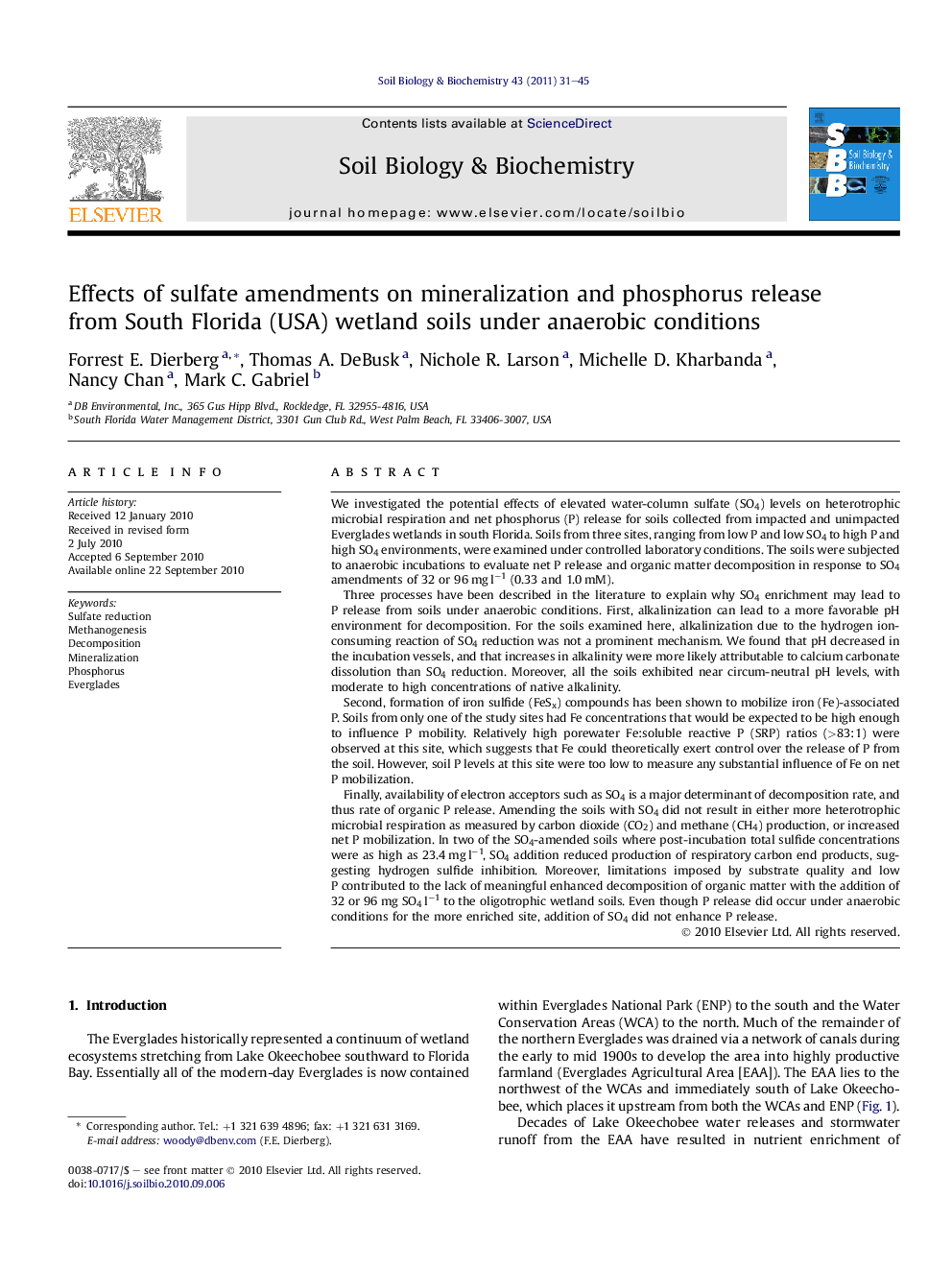| کد مقاله | کد نشریه | سال انتشار | مقاله انگلیسی | نسخه تمام متن |
|---|---|---|---|---|
| 2025703 | 1070007 | 2011 | 15 صفحه PDF | دانلود رایگان |

We investigated the potential effects of elevated water-column sulfate (SO4) levels on heterotrophic microbial respiration and net phosphorus (P) release for soils collected from impacted and unimpacted Everglades wetlands in south Florida. Soils from three sites, ranging from low P and low SO4 to high P and high SO4 environments, were examined under controlled laboratory conditions. The soils were subjected to anaerobic incubations to evaluate net P release and organic matter decomposition in response to SO4 amendments of 32 or 96 mg l−1 (0.33 and 1.0 mM).Three processes have been described in the literature to explain why SO4 enrichment may lead to P release from soils under anaerobic conditions. First, alkalinization can lead to a more favorable pH environment for decomposition. For the soils examined here, alkalinization due to the hydrogen ion-consuming reaction of SO4 reduction was not a prominent mechanism. We found that pH decreased in the incubation vessels, and that increases in alkalinity were more likely attributable to calcium carbonate dissolution than SO4 reduction. Moreover, all the soils exhibited near circum-neutral pH levels, with moderate to high concentrations of native alkalinity.Second, formation of iron sulfide (FeSx) compounds has been shown to mobilize iron (Fe)-associated P. Soils from only one of the study sites had Fe concentrations that would be expected to be high enough to influence P mobility. Relatively high porewater Fe:soluble reactive P (SRP) ratios (>83:1) were observed at this site, which suggests that Fe could theoretically exert control over the release of P from the soil. However, soil P levels at this site were too low to measure any substantial influence of Fe on net P mobilization.Finally, availability of electron acceptors such as SO4 is a major determinant of decomposition rate, and thus rate of organic P release. Amending the soils with SO4 did not result in either more heterotrophic microbial respiration as measured by carbon dioxide (CO2) and methane (CH4) production, or increased net P mobilization. In two of the SO4-amended soils where post-incubation total sulfide concentrations were as high as 23.4 mg l−1, SO4 addition reduced production of respiratory carbon end products, suggesting hydrogen sulfide inhibition. Moreover, limitations imposed by substrate quality and low P contributed to the lack of meaningful enhanced decomposition of organic matter with the addition of 32 or 96 mg SO4 l−1 to the oligotrophic wetland soils. Even though P release did occur under anaerobic conditions for the more enriched site, addition of SO4 did not enhance P release.
Journal: Soil Biology and Biochemistry - Volume 43, Issue 1, January 2011, Pages 31–45